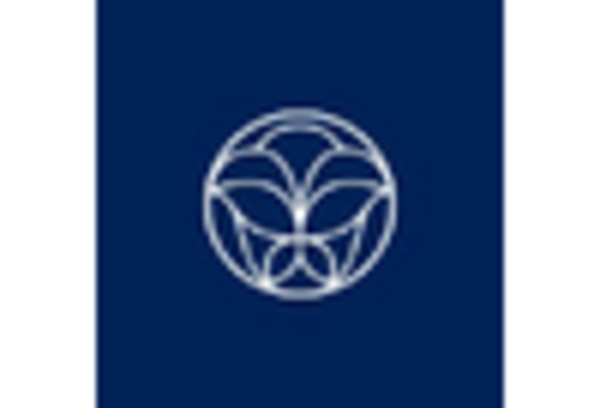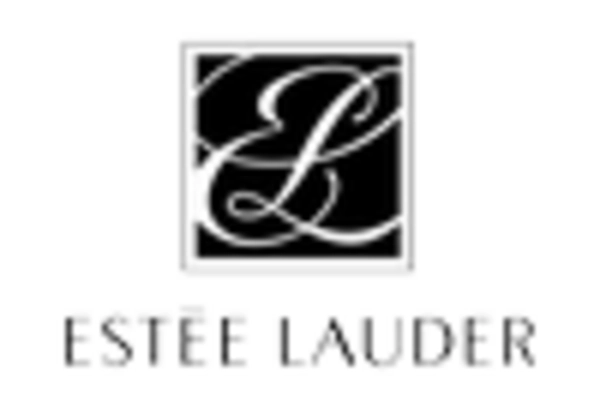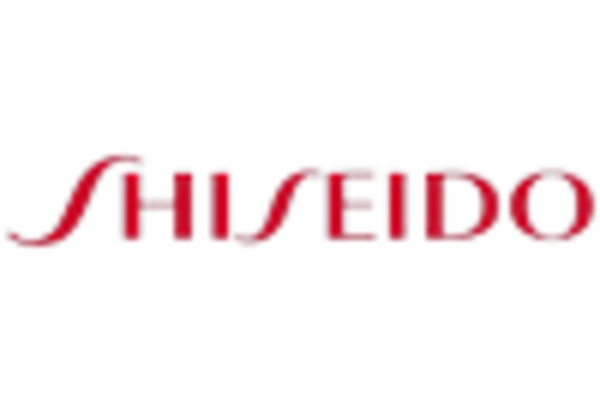Growth of E-commerce Platforms
The makeup remover market is witnessing a significant transformation due to the rapid growth of e-commerce platforms. With the convenience of online shopping, consumers are increasingly turning to digital channels to purchase their beauty products. Data indicates that e-commerce sales in the beauty sector have surged by over 30% in the past year alone. This shift is particularly relevant for makeup removers, as consumers can easily compare products, read reviews, and access a wider range of options. As a result, brands that invest in robust online marketing strategies and optimize their e-commerce presence are likely to thrive in the competitive landscape of the makeup remover market.
Demand for Multi-functional Products
The makeup remover market is evolving as consumers increasingly seek multi-functional products that serve various purposes. This trend is driven by the desire for convenience and efficiency in beauty routines. Many consumers prefer makeup removers that also act as cleansers or moisturizers, reducing the number of products they need. Market analysis suggests that products labeled as multi-functional have seen a growth rate of approximately 25% in recent years. As a result, brands that innovate and develop versatile makeup removers are likely to capture a larger share of the market, appealing to the modern consumer's need for simplicity and effectiveness.
Rising Interest in Clean Beauty Products
The makeup remover market is experiencing a surge in demand for clean beauty products, reflecting a broader consumer trend towards transparency and safety in cosmetics. Many consumers are now scrutinizing ingredient lists and opting for products free from harmful chemicals. Data shows that the clean beauty segment has grown by over 40% in the past year, indicating a strong preference for natural and organic formulations. This shift is prompting brands to reformulate their makeup removers to meet consumer expectations for clean, safe, and effective products. As the clean beauty movement continues to gain momentum, the makeup remover market is likely to adapt and evolve accordingly.
Increasing Consumer Awareness of Skin Health
The makeup remover market is experiencing a notable shift as consumers become increasingly aware of the importance of skin health. This heightened awareness is driving demand for products that not only remove makeup but also nourish and protect the skin. According to recent data, approximately 65% of consumers in the US prioritize skincare benefits when selecting makeup removers. This trend suggests that brands focusing on skin-friendly formulations are likely to gain a competitive edge in the makeup remover market. As consumers seek products that align with their health-conscious lifestyles, the market is expected to see a rise in sales of makeup removers enriched with vitamins, antioxidants, and other beneficial ingredients.
Influence of Social Media and Beauty Influencers
The makeup remover market is significantly influenced by the rise of social media and beauty influencers. Platforms such as Instagram and TikTok have become vital channels for product promotion, with influencers showcasing their favorite makeup removers to millions of followers. This trend has led to a surge in brand visibility and consumer engagement. Research indicates that nearly 70% of consumers are more likely to purchase a product recommended by an influencer. Consequently, brands that effectively collaborate with influencers and leverage social media marketing are likely to see increased sales and brand loyalty in the makeup remover market.

















Leave a Comment